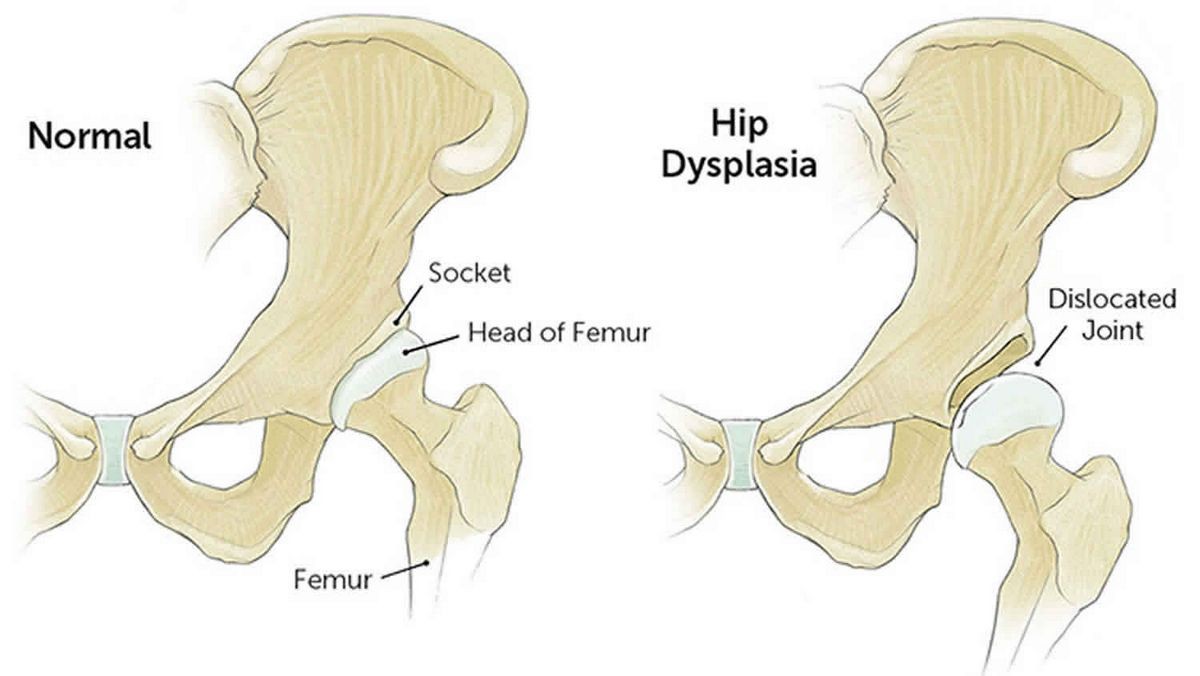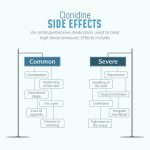
Contents
- 1 What Are the Symptoms of Hip Dysplasia?
What Are the Symptoms of Hip Dysplasia?
Hip dysplasia is a congenital condition that can lead to spinal problems, hip dislocation, a rolling gait, death of hip tissue, and severe arthritis before age 50.
Hip dysplasia, also known as developmental dysplasia of the hip (DDH), is an abnormal development of the hip joint that causes hip instability or dislocation. Hip dysplasia is usually a congenital condition, though it may not manifest until later in life.
The hip joint is a ball and socket joint, in which the head of the thigh bone fits into a socket in the hip bone. The femoral head and the acetabulum are lined with cartilage that prevents friction between the bones and enclosed in a joint capsule, which lubricates the joint.
Normally, the femoral head fits neatly into the acetabulum, which prevents dislocation while allowing mobility. In hip dysplasia, the socket is often shallow, making the joint unstable and affecting normal functioning.
Hip dysplasia may vary in degrees:
- Dislocation: Complete loss of contact between the femoral head and acetabulum
- Subluxation: Incomplete contact between the femoral head and acetabulum
- Instability: Loose joint that can dislocate or subluxate easily
What are the symptoms and signs of hip dysplasia in babies?
Symptoms depend on the severity. Newborn infants may not show signs of hip dysplasia. Doctors usually examine newborns for hip dysplasia using certain maneuvers.
The signs of unilateral hip dysplasia in infants include:
- Unequal leg lengths
- Asymmetrical skin folds on the thighs
- Decreased mobility or flexibility on one side
- Popping sensation when the affected hip is moved
Symptoms may become more apparent as the child grows, including:
- Pain in the groin or hip that worsens with activity
- Loose and unstable hip joint
- Walking with a limp
If both hips are affected, the child may develop a waddling gait with extra curvature in the lower spine.
What is the cause of hip dysplasia in babies?
The cause of hip dysplasia is not clear. A newborn’s hip socket is normally shallow and soft, allowing flexibility during birth. The socket deepens as the baby grows.
Risk factors for hip dysplasia include:
- Genetic factors
- Being the first-born child
- Girl babies
- The breech position
- Low level of amniotic fluid
- Tight swaddling
QUESTION
How do you treat hip dysplasia?
Treatment depends on the age at which it is diagnosed. Nonsurgical treatments may help correct hip dysplasia if detected early, but surgery is usually required for older individuals.
Children
Treatments for hip dysplasia in children up to age six include:
- Pavlik harness: A soft splint that keeps the hips and knees bent and the thighs apart. Worn for several weeks.
- Abduction brace: Worn for eight to 12 weeks.
- Closed reduction: A procedure to manipulate the joint into position without cutting the skin.
- Spica cast: Worn for a few months.
- Surgical procedures for children up to age six include open reduction, pelvic osteotomy, and femoral osteotomy.
Adolescents and adults
Treatment for hip dysplasia in adolescents and adults includes nonsurgical and surgical options:
- Nonsurgical treatments include weight loss, physical therapy, and pain medications.
- Surgical treatments include hip arthroscopy, periacetabular osteotomy, and hip joint replacement.
Can hip dysplasia be cured?
Hip dysplasia can be successfully treated in most children, especially with early diagnosis and treatment. Prognosis is good, and normal hip development can be achieved.
- Treatment outcome depends on the degree of hip dysplasia and the damage to the joint.
- Bilateral hip dysplasia may have a relatively poorer prognosis.
What happens if hip dysplasia is left untreated?
Untreated hip dysplasia can cause complications such as complete hip dislocation, bone tissue death, severe hip pain and disability, and early osteoarthritis.
Can hip dysplasia be prevented?
Hip dysplasia cannot be prevented in most cases, but risks can be minimized through regular check-ups and avoiding tight swaddling.


